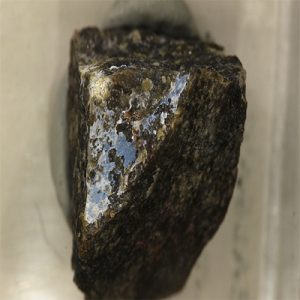Kurchatovite
Kurchatovite is a extremely borate that is rare that was found in 1965 at the Solongo B deposit, Vitim Plateau, Buriatia Republic, Transbaikalia, Eastern-Siberian Region, Russia. This is the location that is only Kurchatovite. It is typically found in a matrix of white Dolomite as granular crystals to about 4 mm in tones of pale gray with vitreous luster and Mohs hardness of about 4.5.
Kurchatovite is termed after Igor Vasil’evich Kurchatov (1903–1960), Russian physicist, Institute of Nuclear Energy, Moscow, Russia. Kurchatov was a soviet physicist that is nuclear was the director of this Soviet atomic bomb project and it is remembered because the “father of the Soviet atomic bomb” for his directorial role in the growth of the Soviet nuclear program in a clandestine program during World War II.
Kurchatovite distribution: in Russia, from the Solongo boron deposit, Buryatia, and at the Novofrolovskoye copper deposit, near Krasnoturinsk, Turinsk district, Northern Ural Mountains.
| Chemical Formula: | Ca(Mg,Mn2+,Fe2+)B2O5 |
| Calcium Magnesium Manganese Iron Borate | |
| Molecular Weight: | 178.34 gm |
| Composition: | Calcium | 22.47 % | Ca | 31.44 % | CaO |
| Magnesium | 8.18 % | Mg | 13.56 % | MgO | |
| Manganese | 9.24 % | Mn | 11.93 % | MnO | |
| Iron | 3.13 % | Fe | 4.03 % | FeO | |
| Boron | 12.12 % | B | 39.04 % | B2O3 | |
| Oxygen | 44.86 % | O | |||
| 100.00 % | 100.00 % | = TOTAL OXIDE | |||
| Crystallography: | Orthorhombic – Disphenoidal |
| Crystal Habit: | Granular, to 4 mm. |
| Twinning: | None |
| Cleavage: | One perfect, parallel elongation; two others, imperfect. |
| Fracture: | n/a |
| Tenacity: | Brittle |
| Moh’s Hardness: | 4.5 |
| Density: | 3.20 (g/cm3) |
| Luminescence: | Fluorescent; bright violet under long wave UV light |
| Radioactivity: | Not Radioactive |
| Color: | Pale gray |
| Transparency: | Semitransparent to transparent |
| Luster: | Vitreous |
| Refractive Index: | 1.635 – 1.698 Biaxial ( – ) |
| Birefringence: | 0.063 |
| Dispersion: | None |
| Pleochroism: | Slight; r > v |


